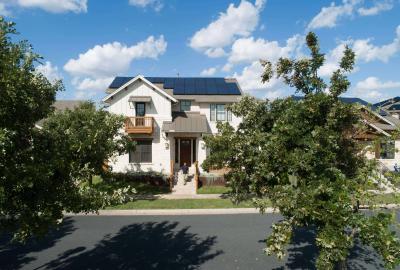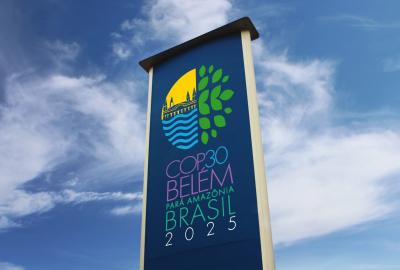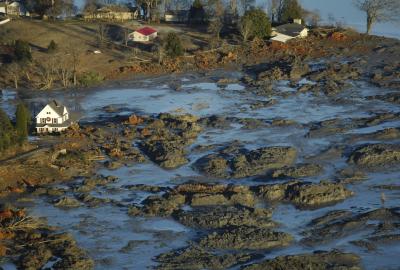Are wetlands breaking bad?
Wetlands are good guys in the fight against climate change. Scientists are working to keep it that way.
In the corner of a quiet lab at Cornell University, the door to an unassuming cabinet is strategically blocked by a chair. A hand-written note scribbled on a sheet of paper asks passersby to leave the cabinet closed. Inside it sit 54 mason jars filled with wet mud.
The simplicity of the setup is intentional, says Meredith Holgerson, an associate professor of ecology and evolutionary biology at Cornell. And it’s no reflection on the ambition of the research. Each jar represents a tiny wetland, those boggy and beautiful ecosystems that support 40% of all Earth’s plant and animal life. In one of them could lie the secret to slamming the brakes on runaway planet-warming methane emissions.
“It’s low-tech by design,” says Holgerson, whose students painstakingly collected the samples from a wetland on campus. “We want this experiment to be as easy and inexpensive to replicate as possible. We’re going to need other labs to help run these sorts of experiments, and there’s no time to waste.”
Nature out of whack in a warming world
As humans warm the planet by burning fossil fuels that trap heat in the atmosphere, it’s changing weather patterns, altering where plants and animals live and upending ecosystems that have been relatively stable for millennia. In short, natural systems like forests, permafrost and wetlands are being thrown out of whack. Forests are becoming drier and more prone to fires. Arctic permafrost is melting. And wetlands are releasing increasing amounts of methane, a potent greenhouse gas that is accelerating global warming.
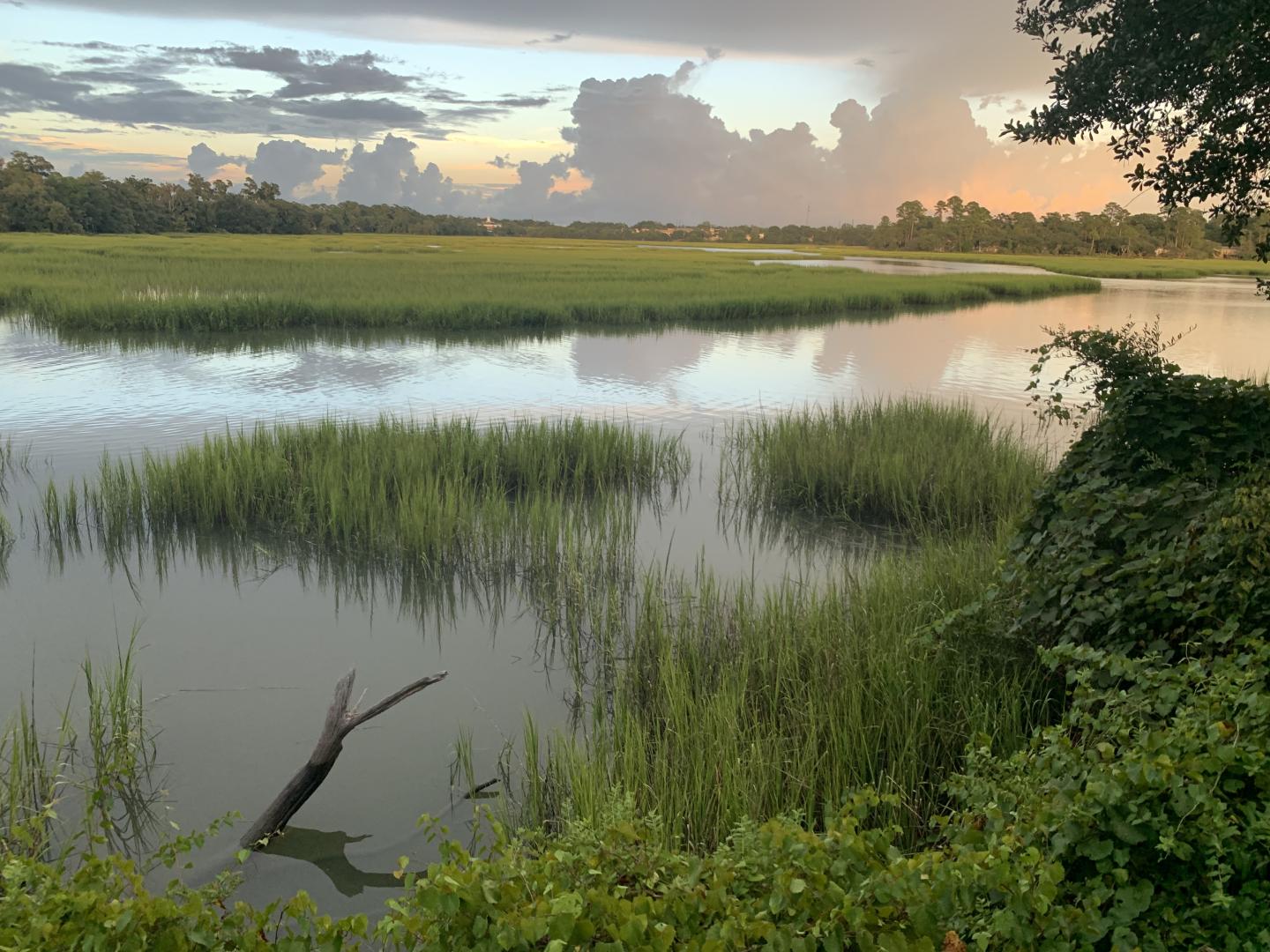
“For decades we’ve taken for granted these natural systems that keep our planet in balance,” said Brian Buma, senior climate scientist at Environmental Defense Fund and director of its Climate Innovation program, which is funding Holgerson’s work. “But the ecosystems that have been shielding us from the real impacts of our pollution are starting to break down.”
The impact of that breakdown will be enormous. Forests, oceans and wetlands have absorbed about half of the climate pollution humans have dumped into the atmosphere. And most scientists and policymakers agree that without these natural systems soaking up this pollution, we can’t zero out our emissions.
Wetlands have always released methane — about one-third of all global methane emissions. Normally, this wouldn’t be cause for concern, but as the planet heats up, this natural process is being supercharged. Scientists estimate wetlands could release twice as much methane annually by the end of the century if the warming continues at its current pace.
That’s a big problem, as methane is a potent greenhouse gas with 80 times the warming power of carbon dioxide in the short term. And as wetlands release more methane because of rising temperatures, that methane further warms the planet, creating a dangerously escalating feedback loop.
If climate pollution is left unchecked, changes to natural systems like wetlands could further exacerbate warming and decrease the amount of time the world has left to hold global temperature rise under 2 degrees Celsius — a threshold scientists say will help the world avoid some of the worst impacts of global warming. We don’t have a lot of time left before global temperatures cross that threshold. If we properly account for feedback from natural systems, we have even less time — 20-25% less time.
Environmental news that matters, straight to your inbox
Wetlands can help fight climate change
Holgerson and Buma stress that “wetlands are not the bad guy here,” and conserving them is still a crucial part of protecting people from climate harm. For one thing, wetlands are pros at keeping carbon dioxide out of the atmosphere. One acre of wetlands can trap more carbon than an acre of tropical forest. Wetlands also serve as lifesaving natural buffers against floods, storm surges and droughts, all of which are expected to become more frequent and intense as temperatures rise.
There is a silver lining too. Reducing fossil greenhouse gas emissions to limit warming can shut down the dangerous feedback loop, creating even bigger climate benefits. In a recently published paper, Buma and colleagues calculated that for every degree Celsius of warming we avoid by reducing our greenhouse gas emissions, we get an extra 3-8% of avoided warming from wetlands — a meaningful bonus.
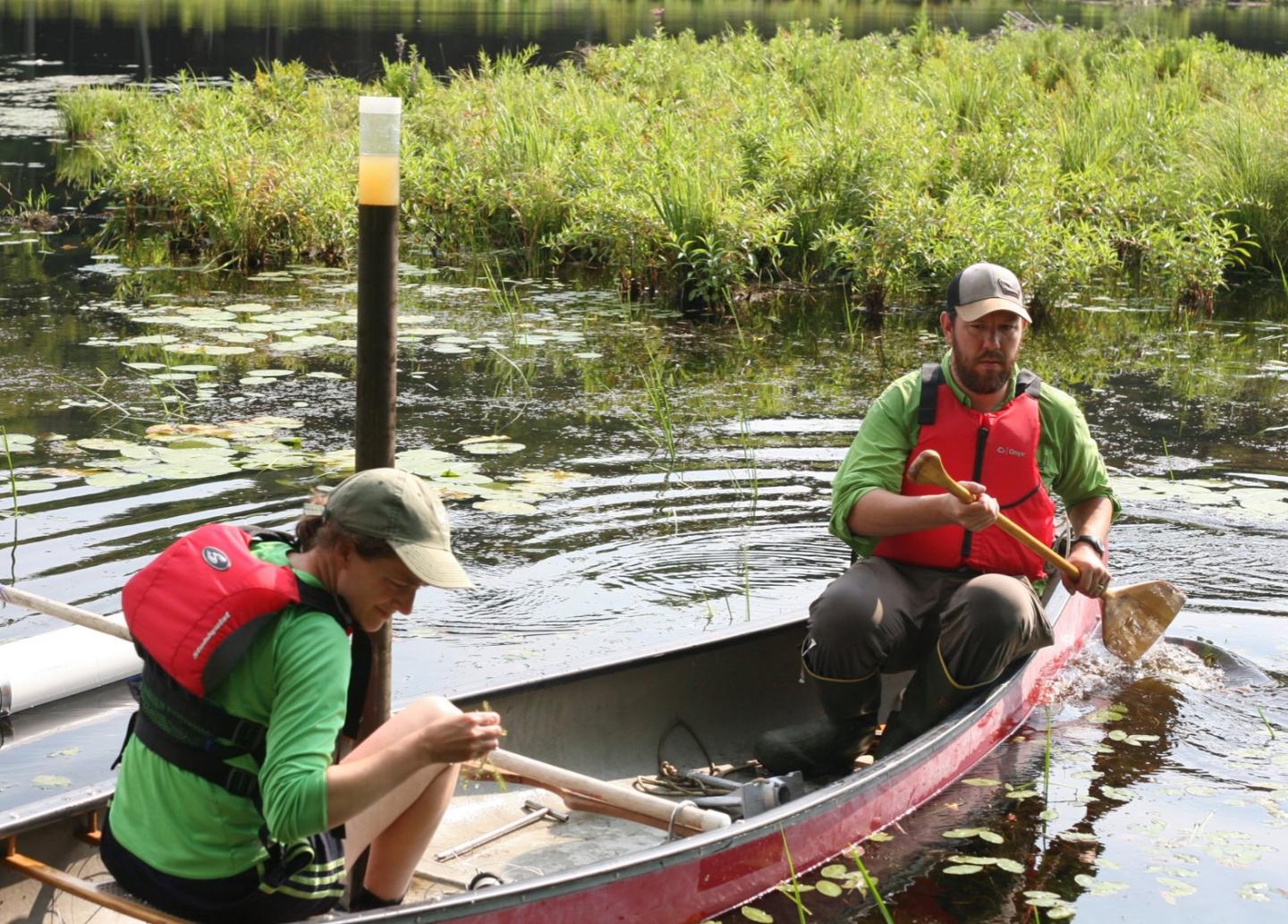
“The smart thing to do is reduce our direct emissions,” said Buma. “But in case we’re not able to reduce our emissions as much or as quickly as we need to, we need to start looking at other ways to help wetlands get back in balance.”
That’s exactly what Holgerson and her mud-hauling team are attempting to work out. Armed with their jars of mud, they are testing out how mixing in different compounds impacts the chemical pathways and microbial interactions that determine how much methane is released from wetlands. They’re testing additions of sulfate, nitrate, iron and biochar — a charcoal-like substance that is made from heating organic matter like wood and agricultural waste with very little oxygen.
Once they have some promising candidates identified, they’ll move into small field trials at Cornell’s experimental pond facility, where there are wetlands that can be manipulated. By moving outside of the jars, the team will assess how variables like native plants and microbes interact with these amendments. Cornell’s experimental wetlands are human-made shallow depressions that can be divided up into a grid of side-by-side experiment plots to test the effect of different conditions. One day, Holgerson hopes to test amendments in real-world settings, such as degraded or restored wetlands which may not be functioning as well as they could be.
“It would never be feasible or desirable to try to manage all the world’s wetlands with these sorts of amendments,” said Holgerson. “But if we can identify the world’s wetland methane hotspots, then there may come a day where very strategically treating small areas in these hotspots would make a big difference.”
A global methane blind spot
While Holgerson continues to monitor her mini wetlands-in-a-jar, Buma is considering his own quagmire –—how to track and account for the world’s rising wetland methane emissions in global arenas where no country wants to be saddled with any more responsibility for tackling climate change than they already have.
“No country is reporting the increasing methane emissions from unmanaged wetlands,” said Buma. “We know this is a huge hole in our accounting that is going to throw our budgets off. At the same time, it is completely understandable that a country that happens to have wetlands within its borders, but hasn’t contributed significantly to climate change, would be wary of reporting wetland emissions. After all, wetlands aren’t the root of the problem, it’s humans burning fossil fuels.”
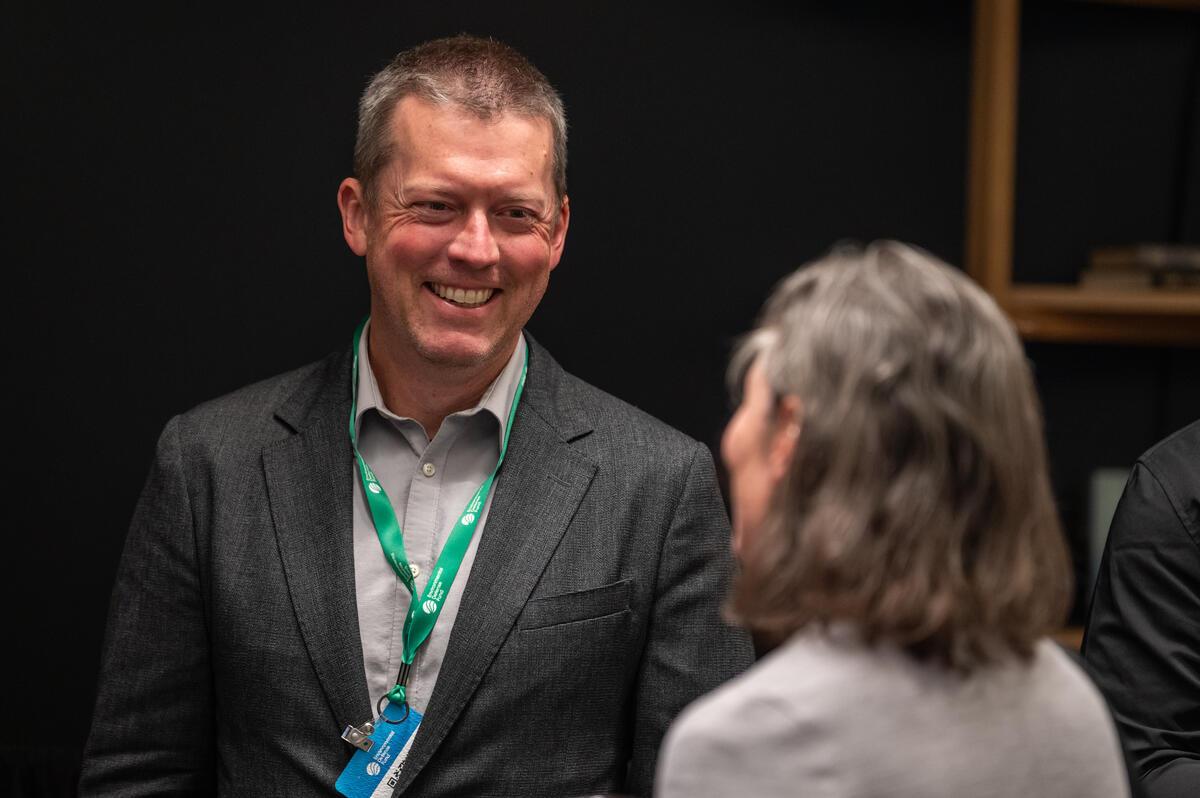
Buma and others are calling on international climate bodies like the IPCC and the UNFCCC to change policy so that countries start measuring and reporting these emissions in a way that doesn’t ascribe blame or responsibility for lowering them. The data, they hope, will build a more accurate understanding of the problem and therefore help develop better solutions.
“The policy side of this is almost as complex as the natural systems we’ve disrupted,” said Buma. “But without this data we’re flying blind at a time when we need to have our eyes wide open.”
“Wetlands aren’t a problem that needs solving. They’re a vital ecosystem that much of life of Earth depends on and we need to clean up the mess we’ve made.”
